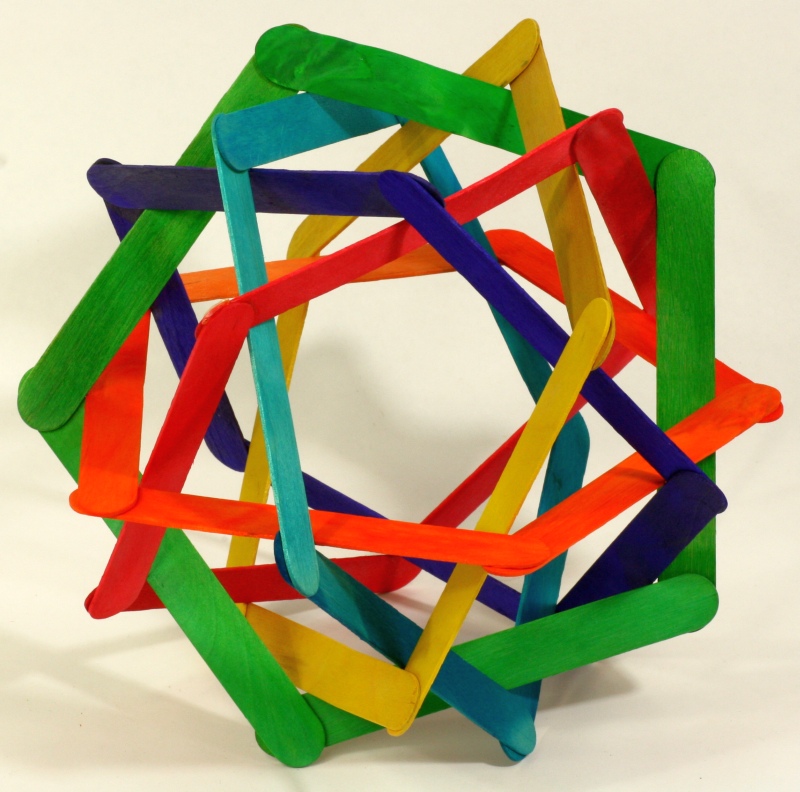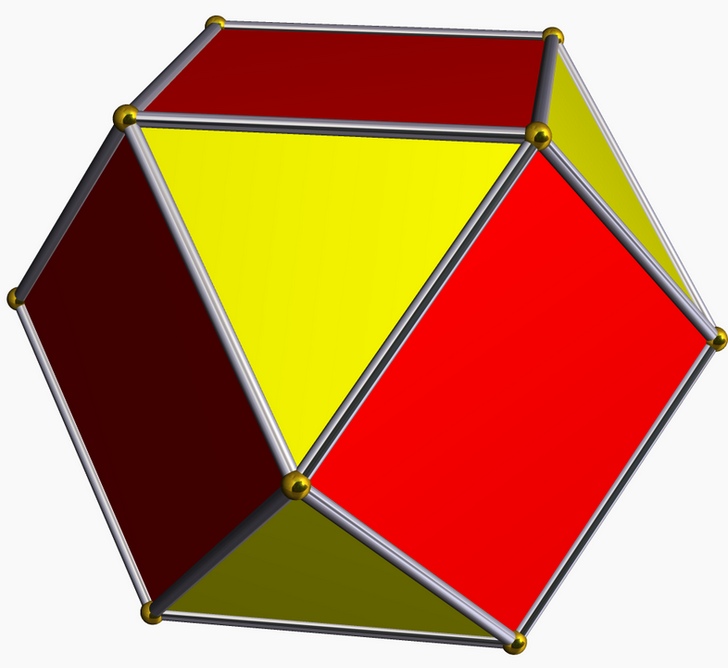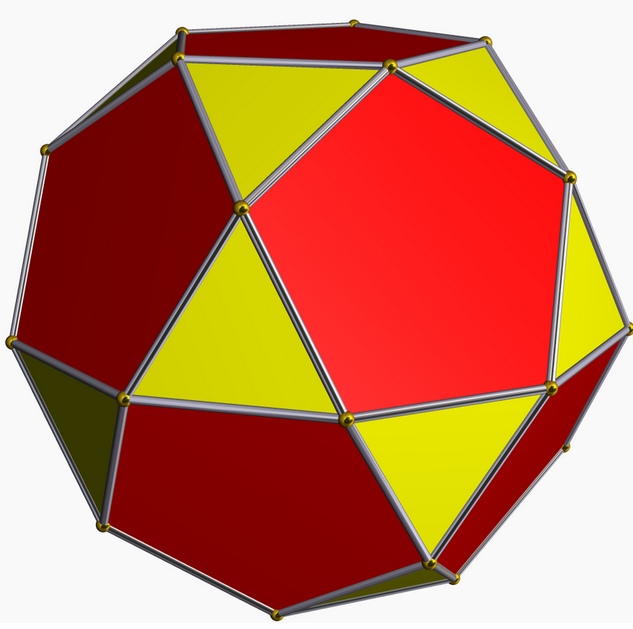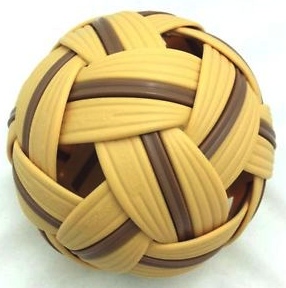This symmetric arrangement of six hollow
pentagons is a harder challenge after the
four-triangles polylink and the
six-squares polylink, which
introduce many prerequisite ideas. Having 5-way openings,
the 108-degree vertex angles of pentagons, and six polygons to
interweave, this is a rather challenging puzzle, but the result
is a lovely symmetric structure worth knowing. Again, we
present it as a puzzle and don't try to give detailed
step-by-step instructions. We believe that developing the
perseverance to find one's own solution is a big part of the
value of the activity.
Time Required: 60 Minutes






